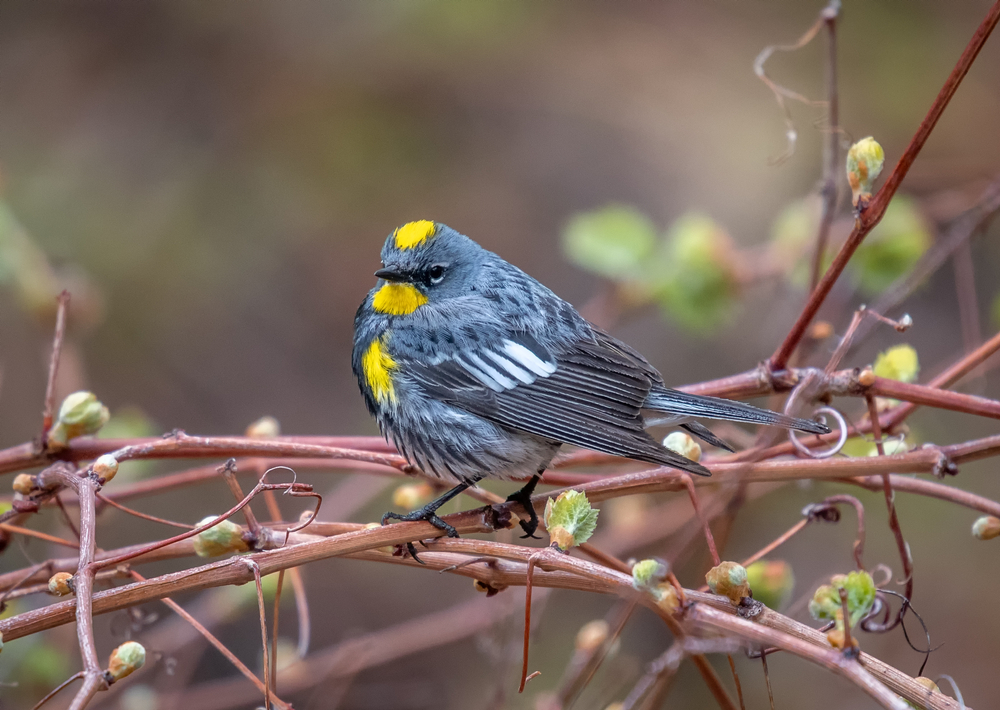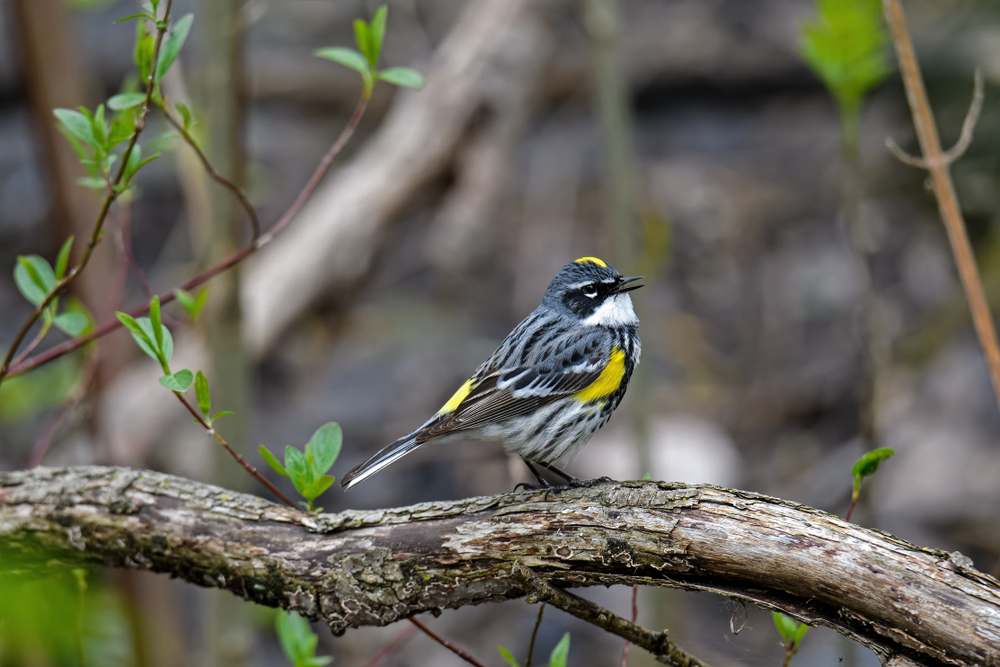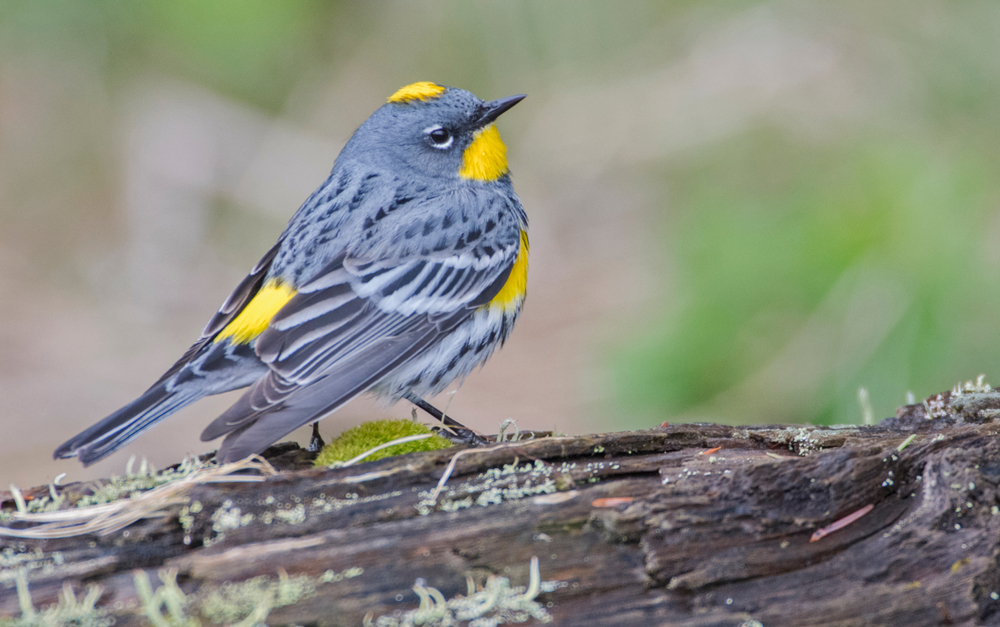The Yellow-rumped Warbler sings a series of trills and whistles, along with buzzes. There are over 100 species of Warblers recorded, all native to the Americas. Warbler songs are made only by males and used to claim territory or to attract a mate.
There are over 50 Warbler species native to North America. Warblers’ songs sound like a clear whistle, a trill, or a buzz. All Warber songs sound similar, though there is some variation among the subspecies.
What Sounds Do Yellow-Rumped Warblers Make?
Only male Yellow-rumped Warblers sing. Warblers’ songs have the following 3 sounds:
- A clear note like a whistle where each note can be heard separately
- A thrill or trill that is so fast the notes blur together
- A buzzy note that sounds like an insect
Warblers sing a blend of these sounds but can also just make one sound at a time. Males can also sound like thin bells, rising in pitch and getting faster at the end of their song. Their songs last 1-3 seconds and can have as many as 21 individual notes. Bird watchers can often hear Warblers before they see them once they learn to recognize these bird sounds.
Both males and females make bird calls. The Warbler call signifies danger or is used as a communication between birds. Bird calls are short and usually made up of just a few syllables. A Yellow-rumped Warbler’s call sounds like ‘psit’ or ‘tsee.’ They also make a ‘chek’ sound. All varieties of Warbles make calls that sound similar. The Myrtle Warbler makes a ‘check’ sound while the Audubon’s warbler makes a ‘chit’ call.
What Is The Purpose Of A Yellow-rumped Warbler’s Song?
Yellow-rumped Warblers have two types of songs that are heard mainly in the early morning hours during breeding season. Male Warbler birds sing the first type in the early morning hours of the breeding season. They sing this bird song while claiming territories before females arrive for the season.
Males sing the second type of song at sunrise after females are present, hoping to attract a female to mate with. Males sing more commonly during spring migration than during fall migration. Males sound like ‘tyew-tyew-tyew’ when they sing.
Other varieties of warblers sound similar. Each male varies slightly in his song while keeping the same general characteristics. Male Yellow-rumped Warblers always sing with a purpose—either to defend territory or to attract a mate.

What Are The Subspecies Of Warblers?
There are 54 subspecies of Warblers native to North America. Warblers likely got their common name due to the characteristics of their songs. To ‘warble’ means to sing in a trilling song with many twists and turns. Warblers all sound similar, though there is some variation in songs and calls between subspecies.
Some varieties buzz more than others, while some subspecies sing more notes or for a longer period of time. Here are the other Warbler birds related to the Yellow-rumped Warbler in the genus Setophaga, along with their bird sounds:
- American Restart—sings a series of 2 to 11 high notes
- Blackburnian Warbler—sounds like ‘zipzipzip…teetee…tsiii’
- Blackpoll Warbler—extremely high-pitched songs, with clear and buzzy tones
- Black-throated Blue Warbler—make buzzy sounds and sing about 5 different notes
- Black-throated Green Warbler—makes buzzy sounds that rise and then fall in pitch from the beginning to the end of his song
- Cape May Warbler—sings a series of 3 to 8 high-pitched ‘tsee’ notes on the same pitch
- Chestnut-sided Warbler—a series of clear falling notes that speed up
- Magnolia Warbler—sings a very short song of ‘wheet’ that ends with an accented note
- Northern Parula—sing a series of two rising notes that end with a trill and an end note
- Palm Warbler—constant buzzy notes
- Pine Warbler—sings a fast trill of 10 to 30 repeated notes
- Yellow Warbler—cheeping tones that speed up at the end
What Is The Most Common Warbler In North America?
The most common Warbler in North America is the Yellow-rumped Warbler (Setophaga coronata). It is found throughout the North American continent. The Yellow-rumped Warbler is a small yellow and black bird. These Warblers are members of The New World Warblers, a Wood Warbler Family (Paruliadae). The Wood Warblers eat mainly foliage and have pointed, slender bills.
Yellow-rumped Warblers frequent the northern US and Canada during breeding season. These songbirds then migrate to the southern US or Central America during winter. Their migration patterns and timing may vary depending on weather conditions. They may also adjust their seasonal habitats depending on environmental factors.
Yellow-rumped Warblers prefer to live in coniferous forests during breeding season. During winter, they live in more open spaces. The Yellow-rumped Warbler has two varieties: the Myrtle Warbler and the Audubon Warbler. The Myrtle Warbler is found mainly in the east, while the Audubon Warbler is found in the west.

What Is The Main Food For Yellow-rumped Warblers?
Yellow-rumped Warblers eat mainly insects. In the winter, they include berries. They typically forage in trees, leaves, and other foliage. Yellow-rumped Warblers have been documented making flycatcher moves from their perches to grab insects from the air.
Birders have also observed these birds skimming bugs off the floors of rivers, edges of lakes, and even piles of manure. In addition to insects, the Yellow-rumped Warbler eats fruits from poison oak, Virginia Creeper, and Dogwood.
Yellow-rumped Warblers commonly eat caterpillars, leaf beetles, bark beetles, weevils, ants, aphids, craneflies, gnats, grasshoppers, and spiders. They also eat the spruce budworm, a damaging forest pest.
The Yellow-rumped Warbler is in fact the only warbler that can digest the wax found in bayberries and way myrtles. This allows it to winter farther north into Canada than other species of Warblers since that is where this beauty is found. Yellow-rumped Warblers enjoy eating suet, sunflower seeds, and peanut butter from backyard feeders.

